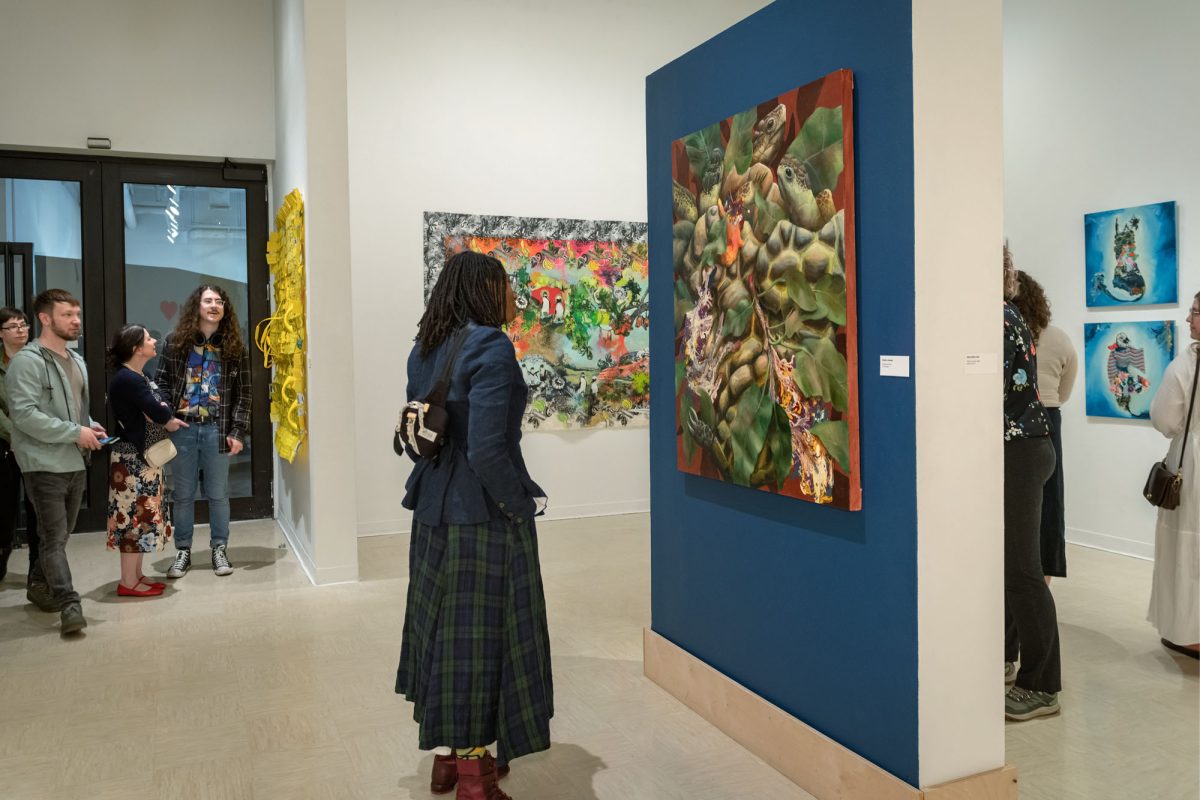“The University of Akron’s chances to win the national tournament were cut short when the Zips lost to Michigan’s Thomas Cooley in the quarterfinals Sunday. Unfortunately the Zips did not make the quarterfinals in the NCAA men’s basketball tournament, but the UA trial advocacy team did.”
“
The University of Akron’s chances to win the national tournament were cut short when the Zips lost to Michigan’s Thomas Cooley in the quarterfinals Sunday.
Unfortunately the Zips did not make the quarterfinals in the NCAA men’s basketball tournament, but the UA trial advocacy team did. On Wednesday last week the team traveled to West Palm Beach Florida where they competed against 14 other regional finalists from around the nation in the American Association of Justice Trial Competition.
Trial team coach Larry Sutter said the team preformed well this year.
This was the result of a tremendous amount of hard work out of a lot of these students and they don’t receive a lot of school credit out of it as far as hours, Sutter said. They had to do far more for these credits than they would do for any other class and it really shows the type of dedication that they have towards their own personal success.
Sutter said the tournament starts with 280 teams and it is narrowed down to 14 teams for the national championship. The teams are then cut down to eight.
UA, headed by student advocates Ryan Melewski and Mallory Sander along with witnesses Bryan Smith and Beki Blackson, managed to make it through the elite eight of the tournament but lost in the quarterfinals.
According to Sutter, Samford University’s Cumberland School of Law ultimately went on to win the national title. Official scores have not been released yet.
According to Bill Ricket, UA’s trial team director, the team went into the competition with a good chance to win. He said the Thomas Cooley School of Law from Michigan has had a team in the tournaments for as long as UA has, and according to Rickett are recognized as a national competitor.
Our two teams that competed at the regional component of the competition finished first and second place, Rickett said. Unfortunately only one team advances to the nationals.
After a very close competition one team emerged and went to the nationals and that team was the one that came back this weekend with the national quarterfinal finish, he said.
The national AAJ tournament was determined by regional tournaments held around the country according to Rickett. In the case of the AAJ tournament, each region sends the winning team to compete in the national tournament.
The topic of this year’s AAJ competition surrounded medical malpractice.
It involved the failure to diagnose breast cancer and I thought that our students did an excellent job narrowing down the facts and putting together a presentation that was both concise and effective, Sutter said.
Each trial has a time limit of three hours divided among the teams competing.
According to Rickett, teams compete in a realistic trial.
Every round that the students compete in is exactly like a small trial, complete with opening statements, the presentation of witnesses on both sides, and both teams will do direct examination of witnesses, cross examinations of opponents witnesses and then they conclude with a closing argument, he said. Quarterfinal, semifinal rounds and the final rounds are usually judged by city judges along with some very prominent trial attorneys from that area.
When the team conducted the plaintiff side, they were representing the state and survivors of the person who was the victim of the miss diagnosis, Rickett said.
According to Rickett, the team often must prepare to represent both sides of the trial.
Team members are trained to do both sides, and in some tournaments half will be trained to do the plaintiff side and half will be trained to do the defense side, Rickett said.
When they assume the role of defense attorney’s they defend in turn the doctor accused of malpractice, he said. They get experience on trying both sides of the case during the competition.
In the AAJ tournament, the team had to be prepared to go either way depending upon which side they are assigned based at the competition, Rickett said.
On the first day of each competition, the coaches meet and learn which teams were selected to compete against each other.
From that random draw and from the scores that are compiled by the teams it is determined who will advance on to the quarterfinals, semifinals and then final rounds from there, Rickett said.
The winners of the preliminary stage in the competition were announced on Friday night. The elite eight however, were not informed who they had defeated during that round.
This is not the first time the trial team has made its way through the national bracket.
This is, I believe, the twelfth time the team has made it as far as the quarter finals and we were the national champions in 2004 in this same tournament, Sutter said. We’ve been national runner up in this tournament five times and quarter-finalist six times.
Sutter also said UA’s trial team has earned a national reputation.
This is a program that has been very good for a very long time and we’re trying our best to improve it beyond where we are today, Sutter said. I think that that it’s pretty safe to say that we are respected among the community as one of the top two or three programs in the country.
“











